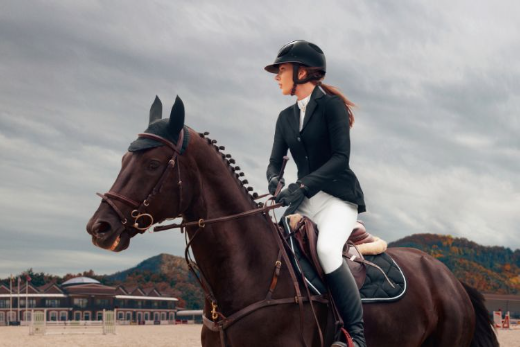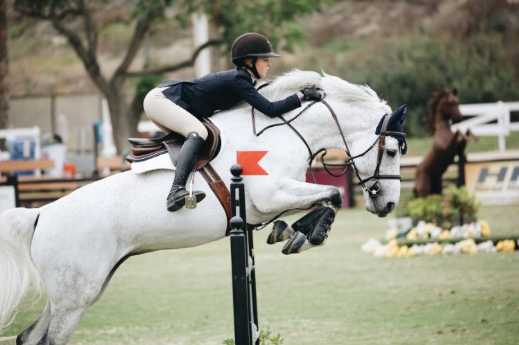Equestrian shows can be quite exhilarating! They’re a mixture of sheer excitement and unmatched elegance. However, one aspect that might be a little tricky to maneuver here is horse show fashion.
On the big day, you want your outfit to comply with the proper dress code while being stylish and attractive, and that’s where this guide comes in handy!
Understanding what to wear to a horse show depends heavily on the discipline and competitions you’re participating in.
Luckily, this guide will provide you with everything you need to know as a rider along with valuable tips for spectators so that you can reflect your preparedness for the show.
The Standard Rules for a Horse Show Attire
Before diving into the juicy details of what you need to wear for the show, there are some essential points that we need to clear out.
For starters, your outfit choice depends mainly on whether you’re attending as a rider/competitor or a spectator.
The most critical aspect to consider as a rider is the discipline and the level of competition you’re in, as each one might have its own dressing code or formal show attire.
For example, the United States Equestrian Federation sets clear rules for what you can and can’t wear to a horse show as a competitor, and the dressing guide is updated occasionally.
In that case, you might need to contact the show organizers to check for any specific guidelines while prepping for the show.
Some professions with certain uniforms might also be allowed to wear their occupational uniforms while participating in a horse show, including active and retired army and police personnel.
You also need to keep the conditions of the horse show in mind while choosing your attire. For both spectators and competitors, the attire needs to address both comfort and safety.
How to Dress for a Horse Riding Show as a Competitor
Looking your best while feeling comfortable and confident is key when dressing for a horse riding show as a competitor, but you also want to ensure that your horse show apparel is adequate and plays by the rules.
Let’s have a breakdown of what you need to wear for different disciplines.
English Rider Attire

Ideally, English equestrian competitions value conservative dressing with an emphasis on maintaining a sleek look while staying comfortable and safe while riding. So, here’s what you should consider while styling your riding outfit.
Shirts
The white show shirts are your way to go when it comes to classic horse shows like dressage and hunter/jumper competitions.
You can choose a flattering cut to match your style, whether it’s a choker collar or a turtleneck. You may also pick the length of the sleeves under the coat, ranging from sleeveless to long sleeves.
The shirt is traditionally paired with a stock tie and a stock pin for added elegance and sophistication. Nowadays, a plain collar is preferred by exhibitors.
Breeches
The most essential elements to consider while picking breeches for a horse show are proper fitting and comfort. The breeches should be flexible to allow you freedom of movement while riding.
The color of the breeches is also essential, depending on the competition you’re participating in.
Most competitive shows require riders to wear light-colored breeches, including white and varying degrees of tan/beige while Black and navy blue are often prohibited in hunter/jumper shows.
For a more complete look and better functionality, you should always pair up your breeches with equestrian belts that match the boots’ colors.
Boots and Spurs
It’s fairly common for most formal classes, regardless of the discipline, to specify certain aspects while picking your horse riding footwear.
In most cases, horse riders need to wear tall boots, typically from leather or other sturdy fabrics.
In a lower level competitions, the rules for boots can be a bit more relaxed, allowing you to wear paddock boots with or without half-chaps.
Coats
For most classic horse shows, you’ll need to wear a standard coat while riding your horse. Back in the day, competitions were quite strict about the color of the coats worn to competition.
But recently, new color variations have now been permitted, although they’re typically dark-colored, including black, navy blue, dark brown, and maroon.
While they look similar, dressage and hunter coats differ mainly in terms of the number of buttons (four and three, respectively).
Choose a coat with stretchy fabric and moisture-wicking properties for an optimal level of comfort while riding.
Gloves
Gloves are technically optional for some horse riding competitions. However, they can give you a remarkable competitive edge by improving your grip and protecting your hand from blisters.
In addition to its functionality, wearing gloves is an excellent finishing touch to your style, as it makes you look more professional and elegant.
Despite being optional, some competitions have clear rules regarding the color of the gloves you can wear in competition.
For instance, white is the most common color for dressage shows while black and navy blue is fairly common in hunting and jumping rings.
The ideal glove fabric is up to your personal style, but make sure that they have proper ventilation for improved breathability and keeping your hands dry while riding.
Helmets
Wearing protective headgear is mandatory for all types of English riding disciplines, including dressage, show jumping, hunting, eventing, and polo.
Different disciplines might have their unique rules regarding the safety standards of the helmet, but luckily, most manufacturers will design their riding helmets to match these aspects, so you don’t have to worry about them.
You can also check the USEF’s list of accepted testing standards for headgear to make sure that your helmet is appropriate for the show. Currently, ASTM, PAS, VG1, and Snell certifications are all allowed into horse shows.
In the hunter/jumper world, a good tip here is to go for a subtle helmet with discreet accents. This strikes a good balance between fashion and timelessness while riding, as excessive flashiness can do you more harm than good.
Western Riding Attire

Western showmanship and riding competitions require completely different attires for participants. However, like the previous disciplines, the Western division also has its own guidelines, so here’s a brief overview of what it should look like.
Shirts
While choosing a shirt, always focus on color matching along with functionality. Go for a long-sleeved button-down shirt or blouse in a solid color like white, blue, or green.
Western-style shirts with pearl snaps are always a good option to stand out, as they’ve been a staple in cowboy dressing for decades.
Pants and Jeans with Chaps
Western riding typically involves pants and jeans rather than breeches (although you can still wear them).
The choice here is more varied, which gives you a chance to stand out and show off your style. However, since you’re also going to wear chaps, you should pick slim-fit pants so that the final result doesn’t come off as too bulky.
Boots, Spurs, and Buckles
Another essential part of your horse riding attire during a Western show is your tall boots and spurs.
While picking boots, consider the color of the chaps and belt you’re wearing for an appropriate match. The boots should be made from high-quality leather for durability and functionality.
Large buckles are not only characteristic of Western discipline, but they also have essential functions in some riding styles.
You can choose between plain or ornamental buckles depending on your personal preferences and how they match your overall look.
Hats
A cowboy hat is a must for Western riders. The exact style and material may vary from one style to another, so you should pick this one accordingly.
But generally speaking, choose a flattering hat with a proper fit on your head and decent ventilation.
As a general rule, try to match the color of your hat with your chaps if you’re after a polished look.
Are Jewelry and Accessories Allowed on Horse Shows?
In general, many horse riding disciplines will have strict guidelines regarding accessories and jewelry during competitions for safety reasons and to avoid distractions.
For the same reason, riders with long hair need to put it in a bun or keep it fully contained within the helmet while riding.
However, for the most part, you can still wear modest accessories and jewelry to equestrian shows.
A good way to accessorize yourself without compromising your safety would be through wearing earrings, necklaces, or bracelets.
However, you’ll need to check the show’s guidelines for accessories before putting them on (you can also wear them after riding.)
Essential Tips to Consider While Preparing Your Outfit for a Horse Show
Now that you know more about what to wear to a horse show, here are some valuable tips to help you look your best during the day.
How to Dress for a Horse Riding Show as a Spectator

You can also inspire your outfit from the show you’re attending.
On a sunny day, you may also want to put on appropriate sunglasses, which gives you a clearer view of the show while adding a touch of elegance to your final look.
Final Thoughts
This marks the end of today’s guide on what to wear to a horse show. As you can see, wearing properly fitting clothes in horse shows is not only essential for comfort and elegance, but it’s also a critical safety precaution.
Remember, when in doubt about whether a specific item is acceptable in a show, don’t hesitate to reach out to the organizers to get the green light for it.


